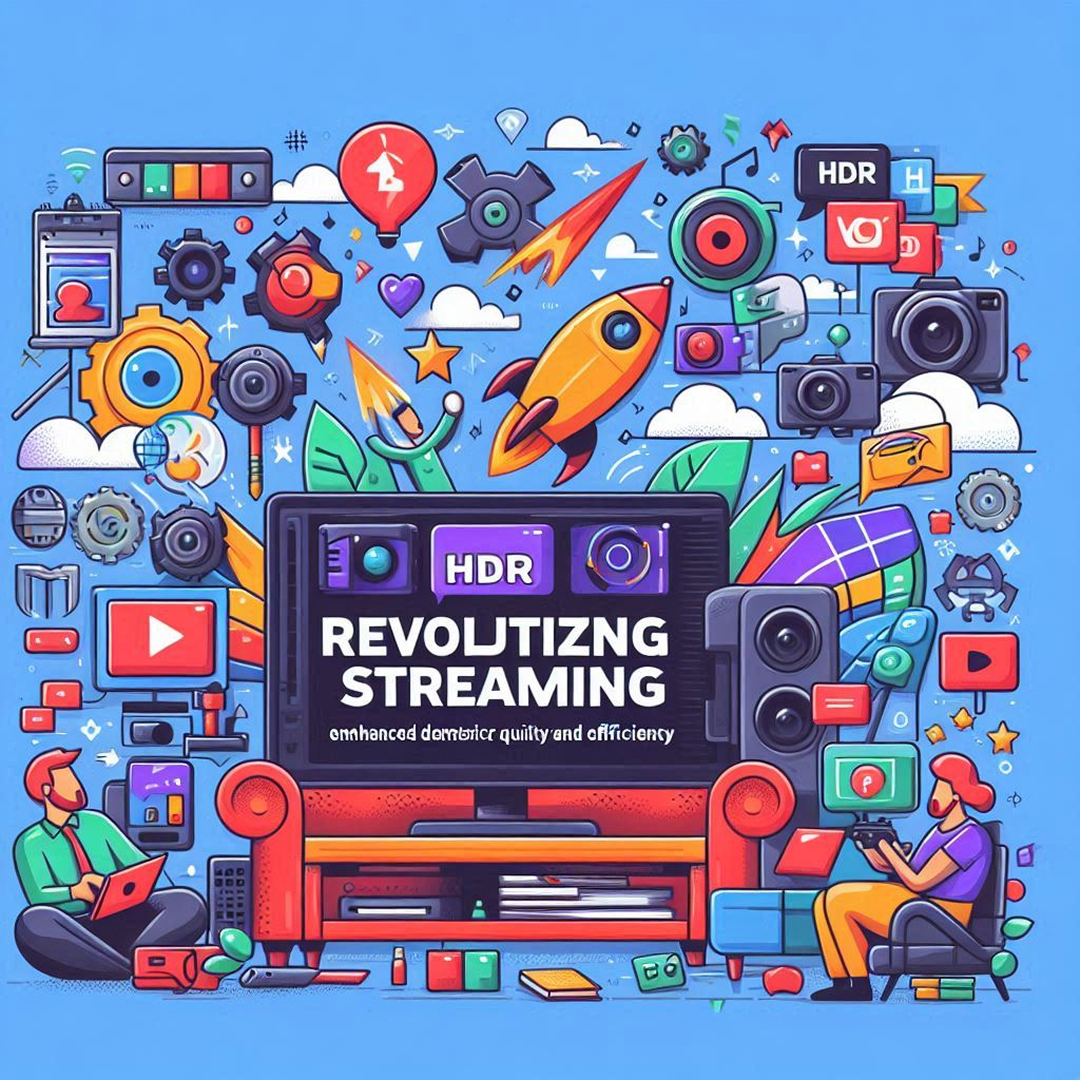Introduction to HDR Video Streaming and Dynamic Encoding
High Dynamic Range (HDR) video technology has revolutionized the viewing experience by offering a richer, more vibrant representation of colors and brightness. As cloud computing and artificial intelligence advance, HDR streaming has become more efficient and improved in quality. In this article, we explore HDR video streaming and discuss how dynamically optimized encoding can significantly improve bitrate management and perceptual quality, benefitting both viewers and service providers.
1. Understanding HDR Video Technology in Cloud Computing and Artificial Intelligence
HDR technology offers a wider range of brightness and color depth compared to traditional standard dynamic range (SDR) videos. By utilizing a full spectrum of light and color, HDR creates a more immersive experience, allowing viewers to feel deeply involved in the content. Additionally, it lets filmmakers showcase their creative intentions more clearly. HDR enhances realism, especially in scenes with dramatic contrasts between light and dark.
Formats such as Dolby Vision and HDR10 provide different approaches to video encoding. These formats use specific processing methods and ensure compatibility with various display devices. Therefore, the HDR viewing experience may vary across different platforms.
2. The Need for Dynamic Optimization in Encoding with Cloud Computing
Video encoding compresses raw video data, making it easier to transmit and store. Traditionally, video encoding used fixed bitrate ladders, where bitrates were predetermined without considering the content’s complexity. As a result, simpler scenes used the same bitrate as more complex ones, leading to inefficient bandwidth usage. High-complexity content often received lower quality because the bitrate was insufficient for such scenes.
Dynamically Optimized (DO) encoding addresses these problems. This technique adjusts the bitrate based on the specific demands of each scene, ensuring better video quality. It recognizes that each scene has unique encoding requirements, improving overall streaming efficiency.
3. Measuring Perceptual Quality: The Introduction of HDR-VMAF
One of the challenges in HDR streaming was measuring perceptual video quality. The introduction of an HDR version of Video Multimethod Assessment Fusion (VMAF) was a major milestone. This metric assesses video quality from the viewer’s perspective, considering how humans perceive video, rather than relying solely on technical specifications.
The development of HDR-VMAF wasn’t without challenges. The pandemic led to a shift in testing methods, with subjective tests conducted at participants’ homes using high-quality OLED displays. This allowed researchers to gather insights into how viewers experience HDR content in everyday settings.
4. Transitioning from Fixed Bitrate to Dynamic Encoding in the UAE
Once HDR-VMAF became available, it became possible to transition from fixed bitrate encoding to dynamically optimized encoding. This change was implemented after extensive A/B testing, which ensured that existing devices could handle the new streams without sacrificing playback quality. By mid-2023, the entire HDR catalog had been optimized, showing the effectiveness of HDR DO encoding.
Dynamically Optimized encoding enables more efficient storage and transmission. Data analysis indicated that, despite achieving higher overall quality, optimized encodes occupy only a fraction (58%) of the storage space traditionally required. This efficiency is achieved through better spacing of bitrate points across various content types.
5. Rate vs. Quality: Analyzing Performance Improvements
A key aspect of video encoding is the balance between bitrate and quality. Both HDR10 and Dolby Vision formats posed challenges due to differences in preprocessing and metadata handling. The HDR-VMAF metric, however, focused on pure signal characteristics, offering a more comprehensive measure of quality.
In practice, applying HDR DO encoding resulted in significant improvements. As bitrates increased, video quality improved substantially, delivering a better viewing experience and accommodating varying connection speeds.
6. Viewed Benefits: Enhancing Member Experience with Cloud Computing
The results of transitioning from fixed to optimized encoding have direct implications for viewer experience. Improvements were measured across multiple dimensions:
– Reduced Rebuffering Events: Viewers experienced 40% fewer interruptions due to buffering, offering a smoother experience.
– Higher Initial Video Quality: Videos now start with better quality, keeping users engaged right from the beginning.
– Lower Data Usage: Optimized encoding reduces data consumption, which is particularly important for users with limited data plans.
– Consistency in Quality Delivery: By minimizing quality variation across sessions, users enjoy a stable viewing experience.
7. Future Perspectives: Open-Sourcing HDR-VMAF and Cloud Computing
One of the main goals of HDR-VMAF is to make the technology open-source. By working with the open-source community, HDR-VMAF can evolve and improve over time. The current version is being refined for usability, and the team is exploring ways to enhance predictive accuracy. Open-sourcing HDR-VMAF will help it become a leading tool in assessing video quality.
8. Conclusion: The Road Ahead for HDR Streaming in the UAE
Thanks to HDR technology and dynamic encoding, video streaming is undergoing a transformation. HDR-VMAF and dynamic encoding techniques improve the streaming experience by offering better video quality and more efficient delivery. As demand for high-quality content grows, these innovations will shape the future of video streaming.
The enhanced quality and efficiency in streaming will continue to meet the growing expectations of viewers, especially in markets like the UAE. As viewers demand higher quality, more immersive content, HDR technology combined with cloud computing and AI will be the cornerstone of future video streaming innovations. This progress will also guide companies toward building successful OTT platforms, ensuring they stay ahead of the curve in delivering superior streaming experiences
9. Enhance Your Streaming Experience with Cloudastra Technologies
At Cloudastra Technologies, we understand the importance of delivering top-notch video quality and seamless streaming. Our cutting-edge solutions leverage cloud computing and artificial intelligence to optimize bitrate-quality trade-offs, ensuring superior video playback across devices. With tailored solutions, we reduce buffering, minimize data usage, and enhance visual quality. Partner with Cloudastra Technologies to create a dynamic, user-friendly streaming environment. Experience the difference where quality meets innovation.
Do you like to read more educational content? Read our blogs at Cloudastra Technologies or contact us for business enquiry at Cloudastra Contact Us.
